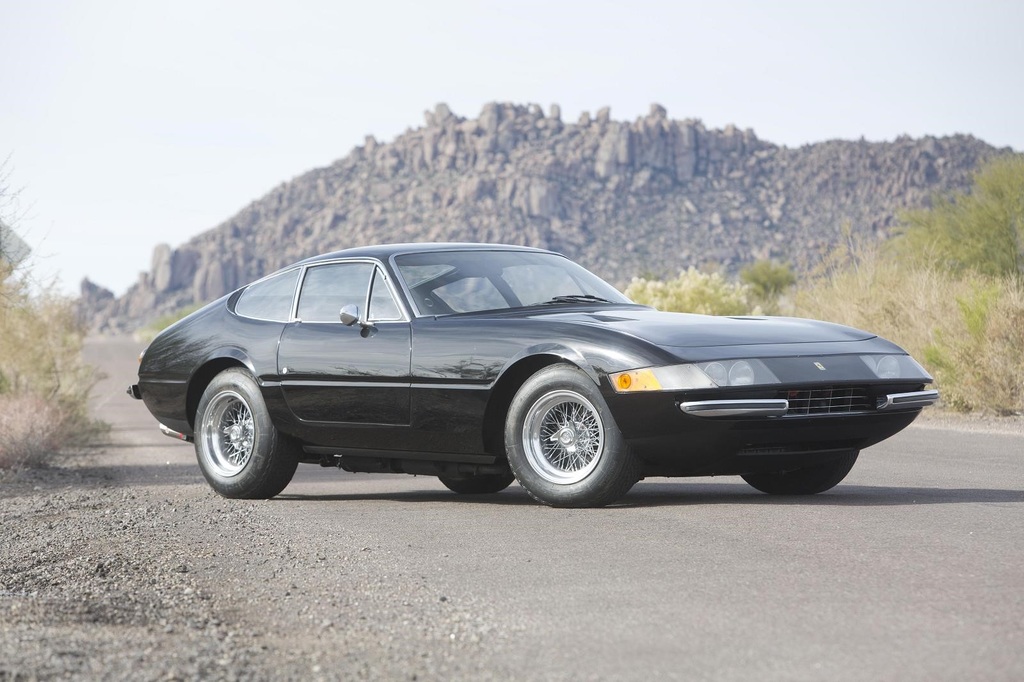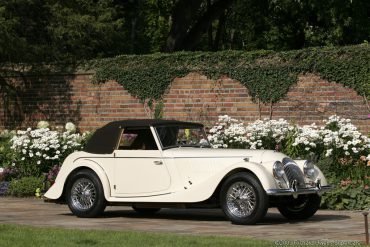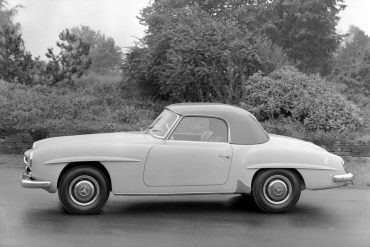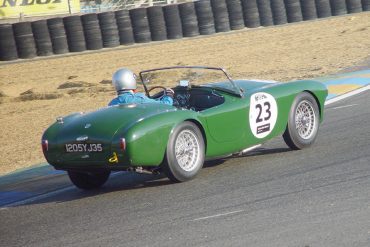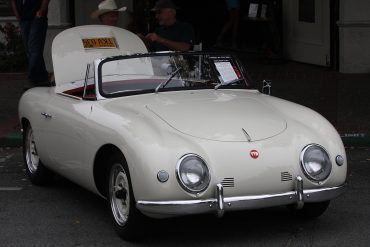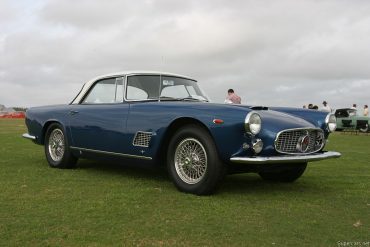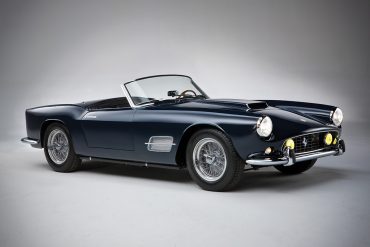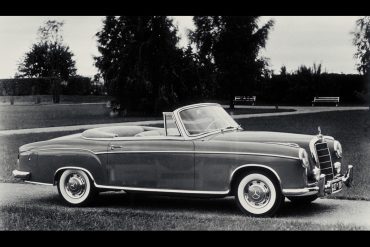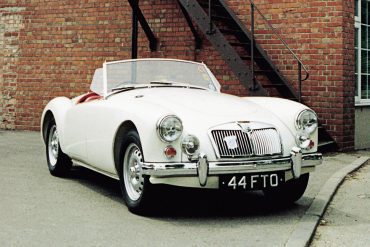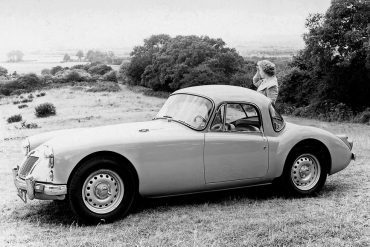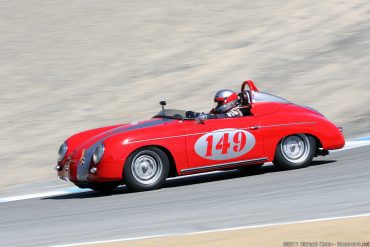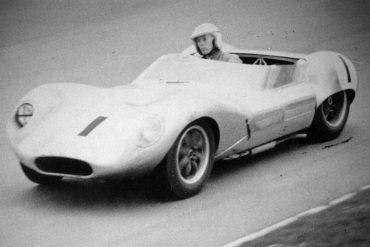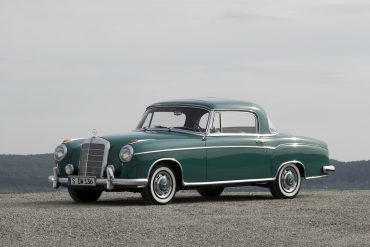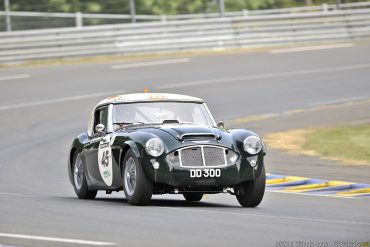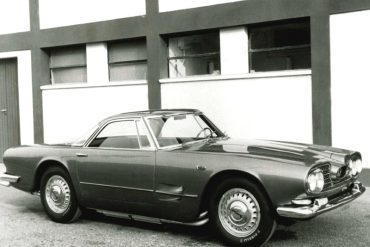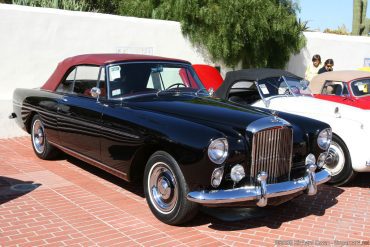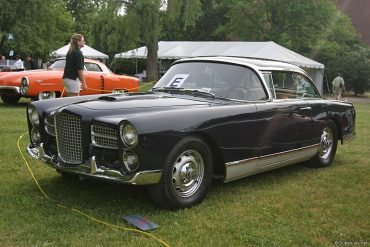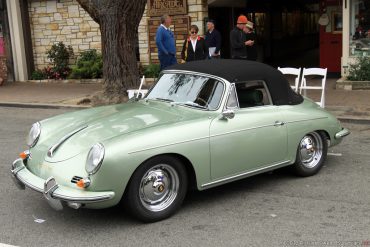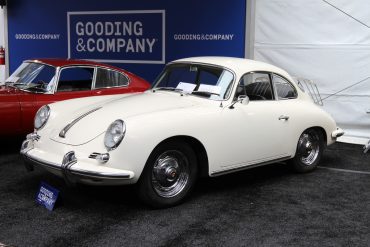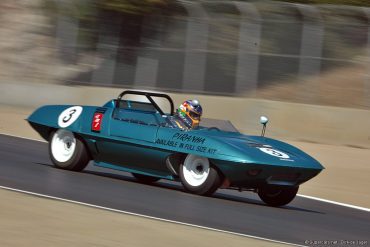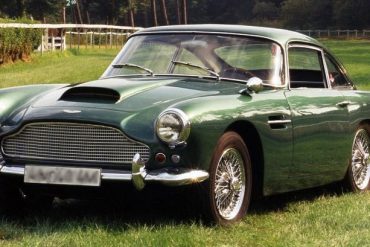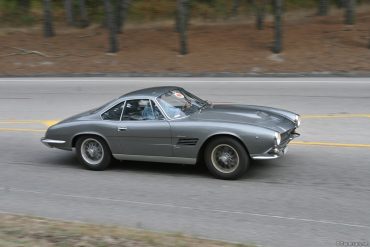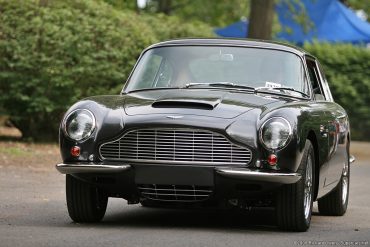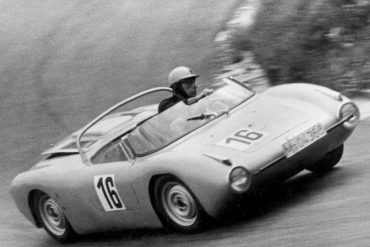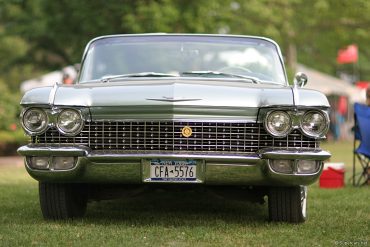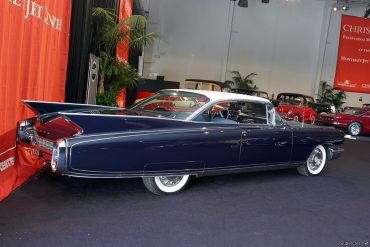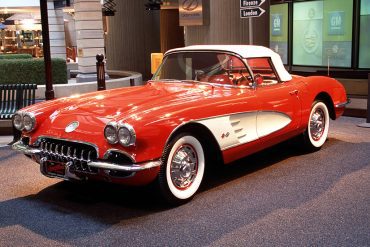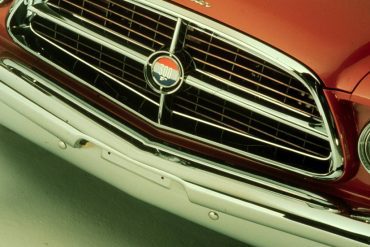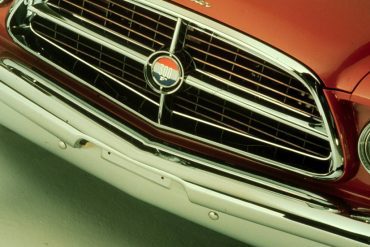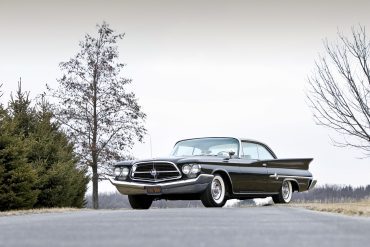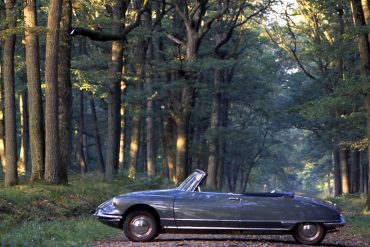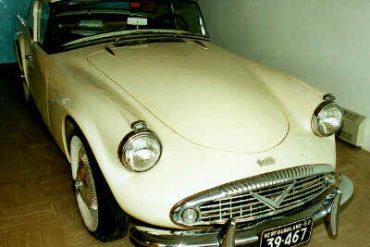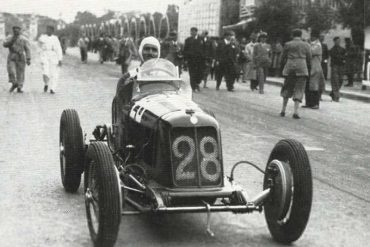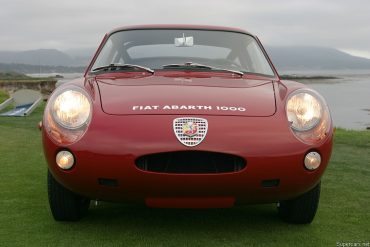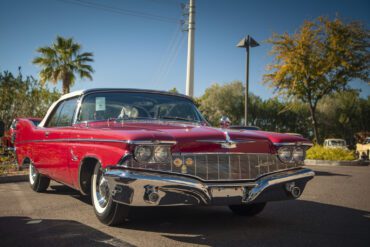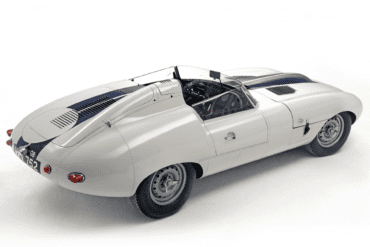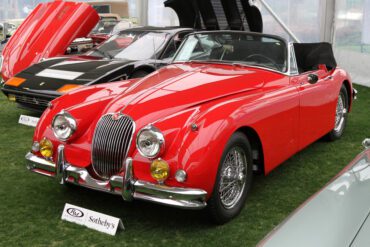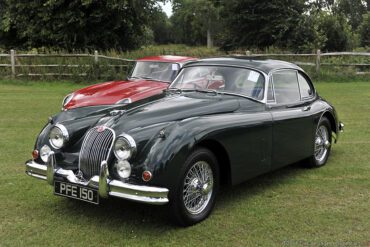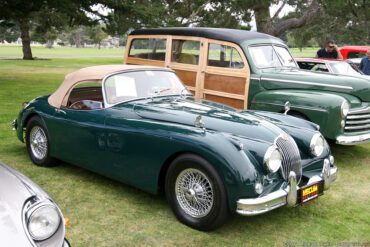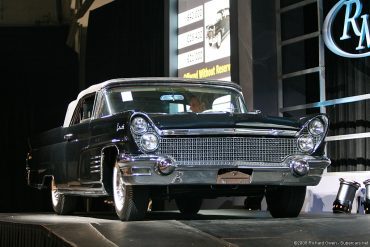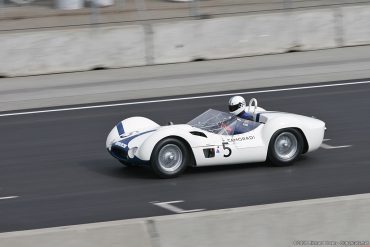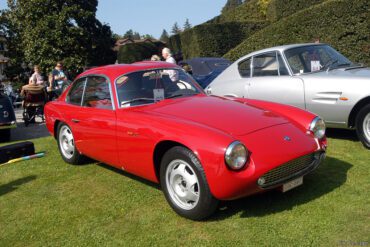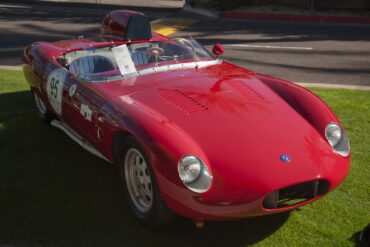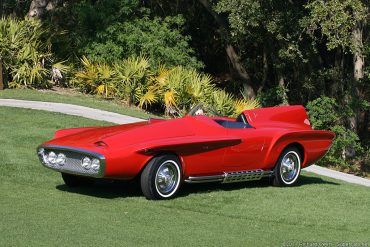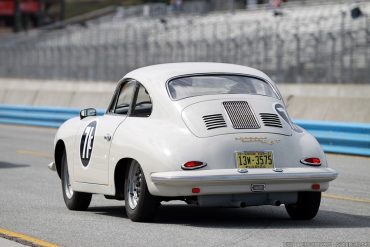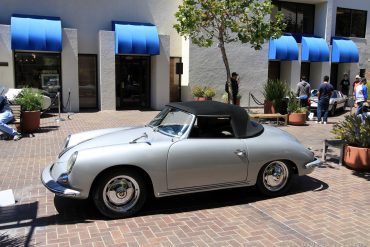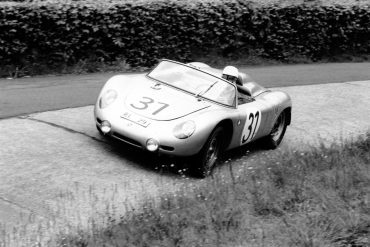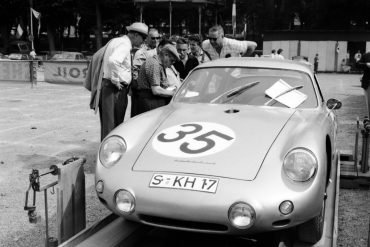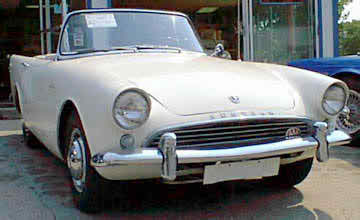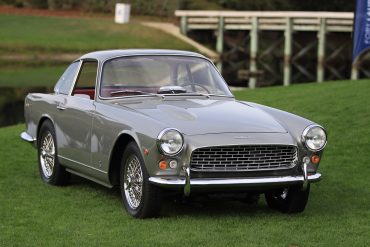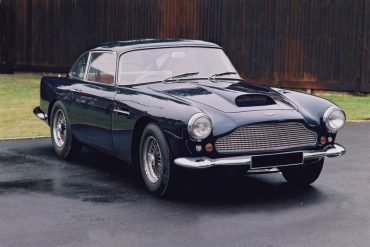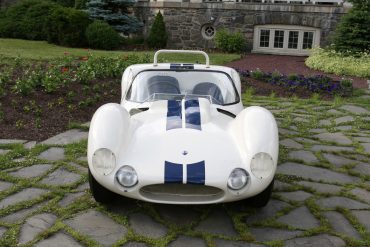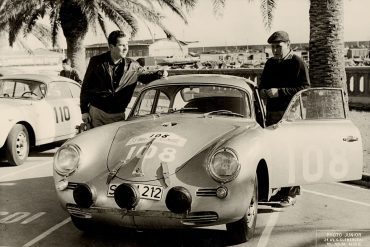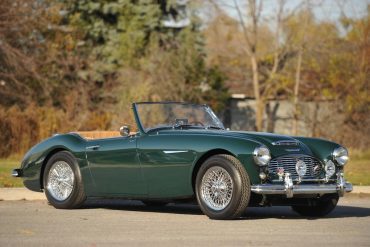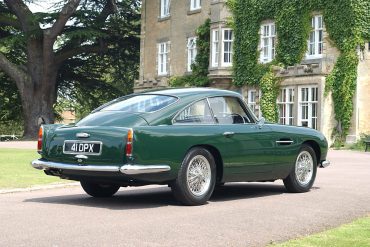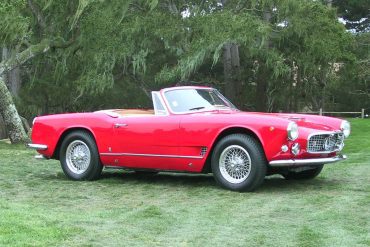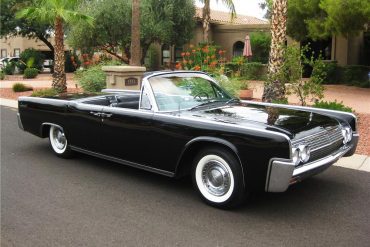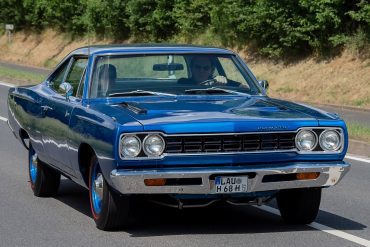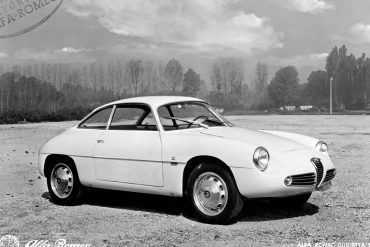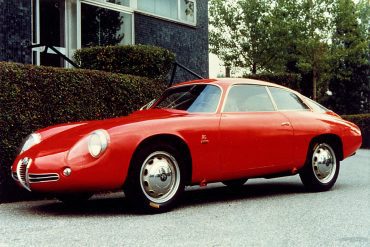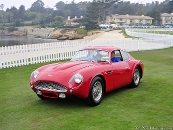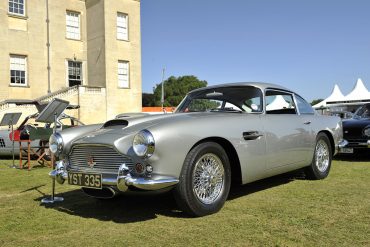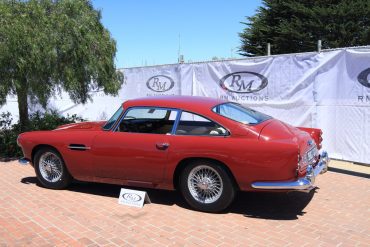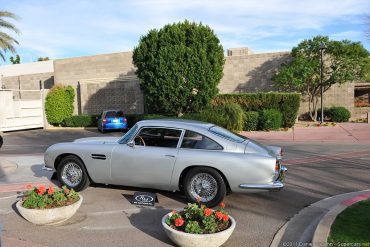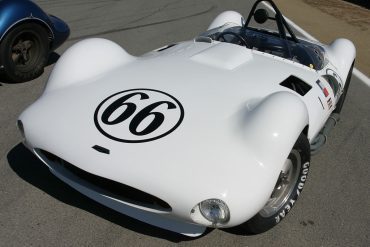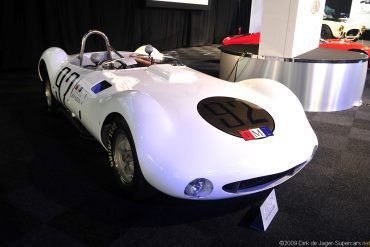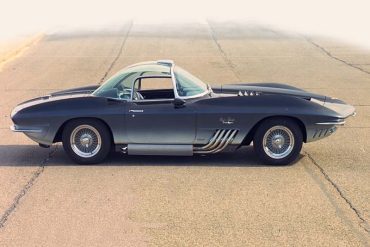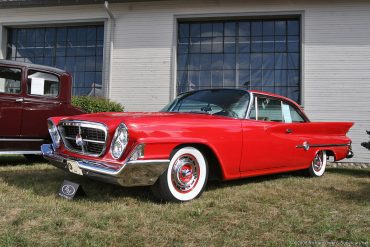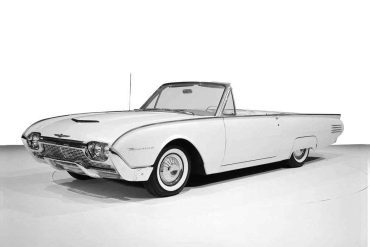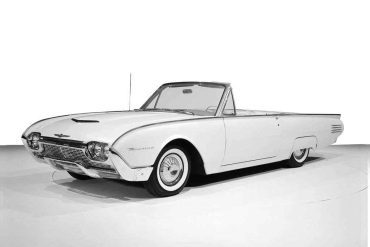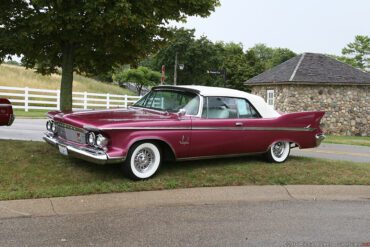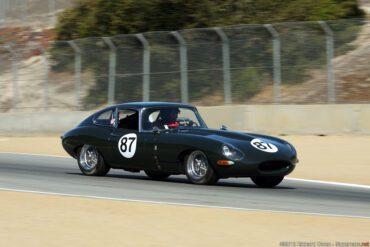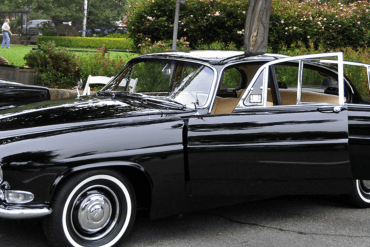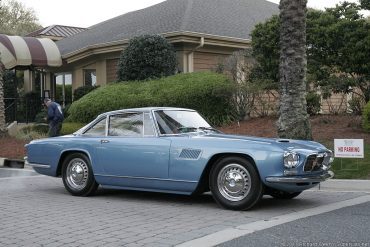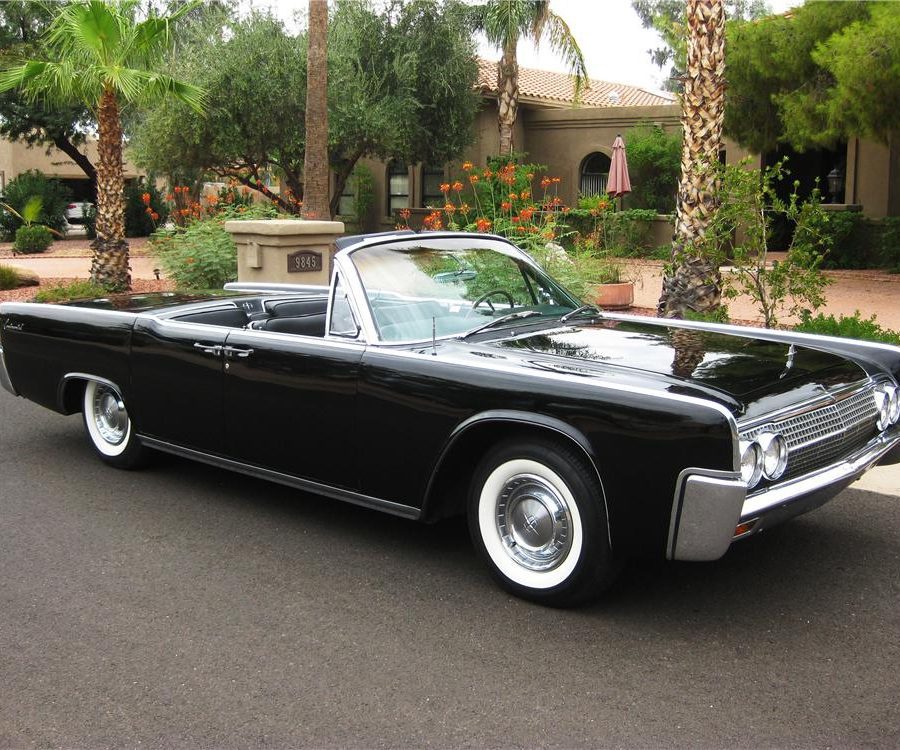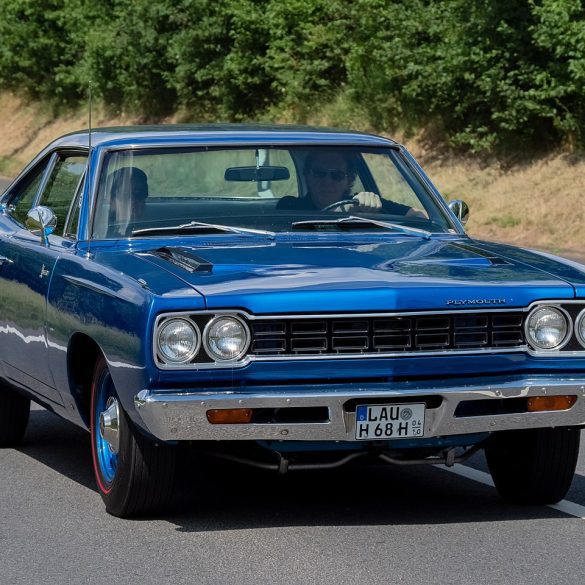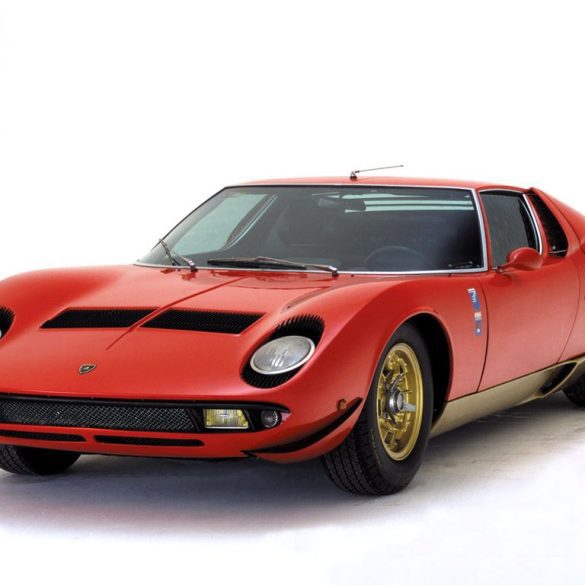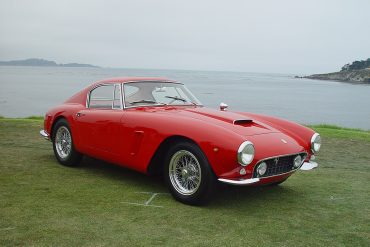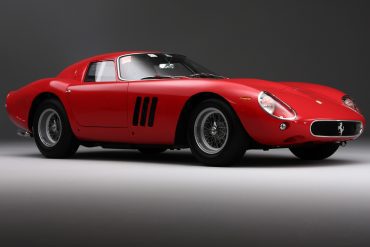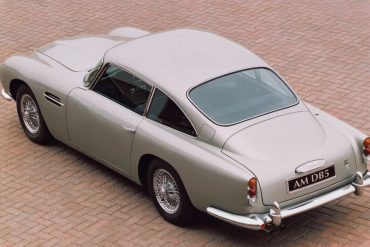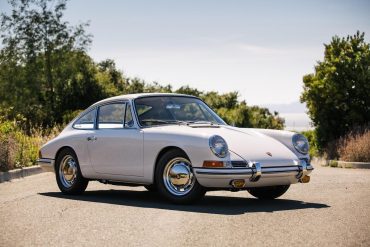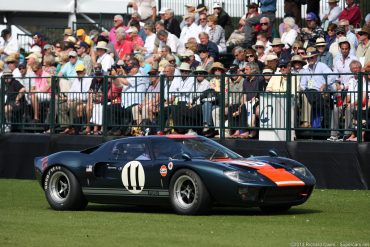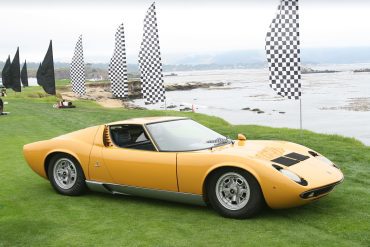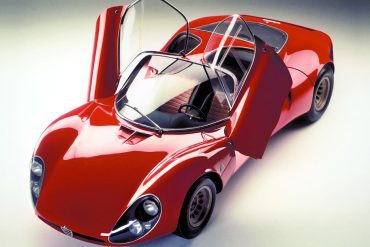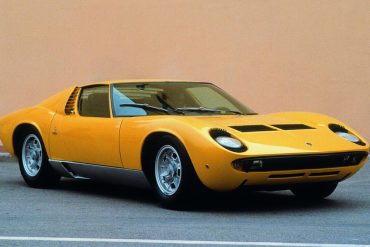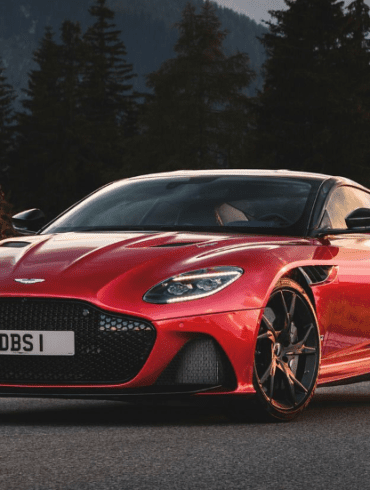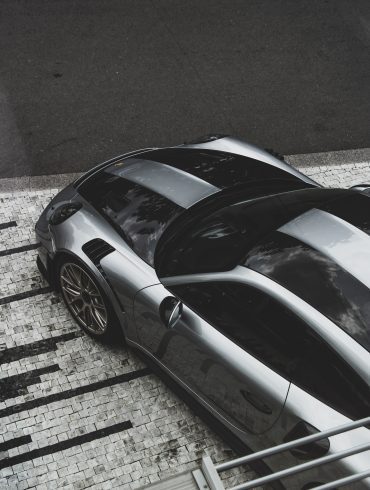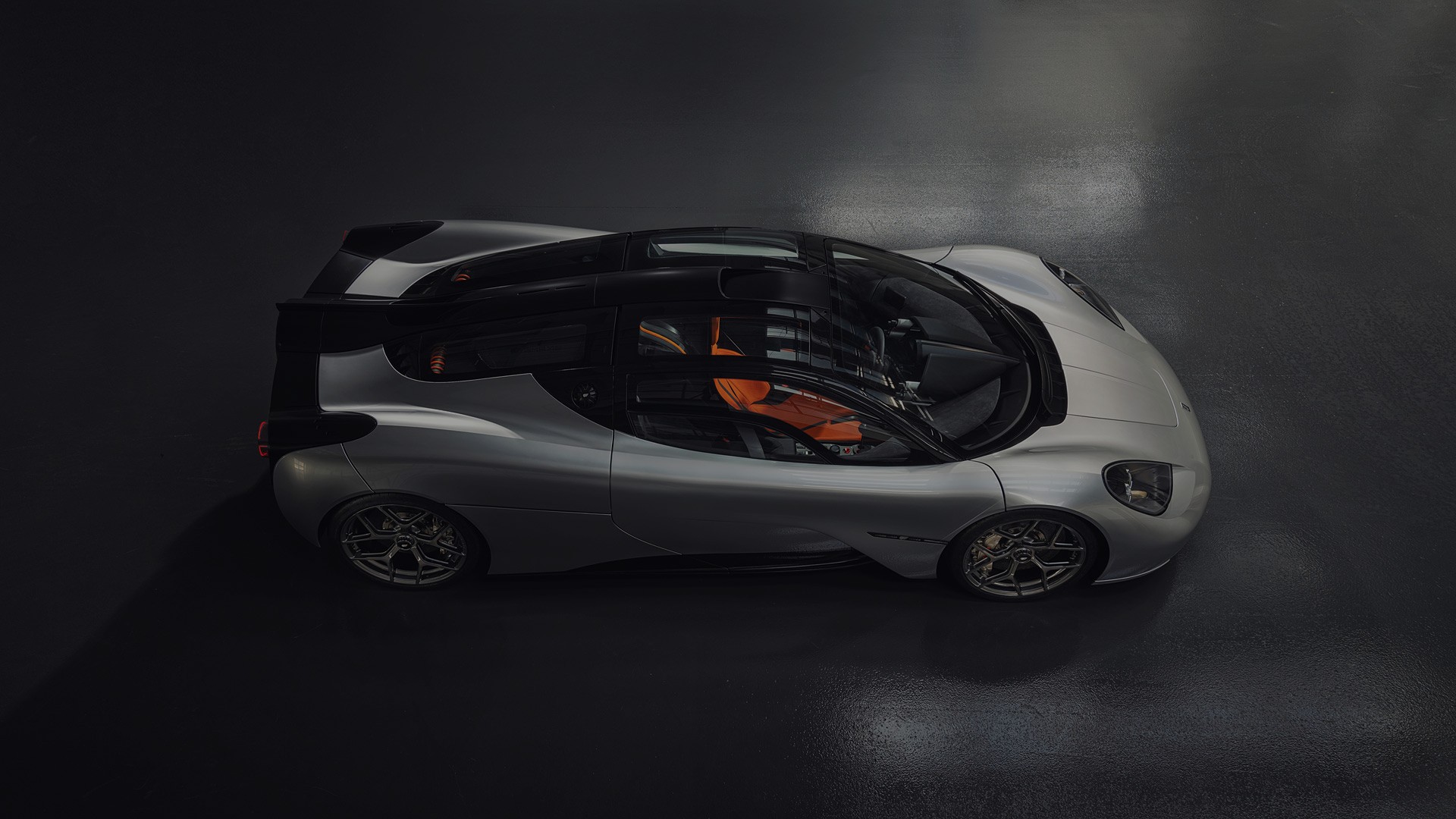1960s Cars – Swinging ’60s Cars
The average 1960s cars costs about $2,752, and a gallon of gas was around 31 cents. The 1960’s were a time of change: the Civil Rights movement as led by Martin Luther King Jr., the Women’s Movement with its demand for equal rights, Russia beat the US into outer space, Elvis hits the UK, the Beatles hit world big time, the advent of the counterculture when hair grew longer and beards became common and reaching its zenith in August 1969 at Woodstock, and later in the decade, man set foot on the moon.
The 1960’s automobiles belonged to a distinct decade of automobile history with the advent of economy, muscle and pony cars. The 1960’s saw the American automobile industry consolidating into the Big Three: General Motors, FordChrysler and American Motors. These firms not only dominated the domestic market with the sales of the 1960s cars, but the global market as well. In 1960 American companies built 93 percent of the autos sold in the United States and 48 percent of world .
In the mid 1950s, however,led by Volkswagen and soon followed by Fiat, Renault, Datsun (Nissan), and Hillman, imports began to nibble their way into the rich American market. The growing presence of imports disturbed Detroit, and the Big Three responded with their own small 1960s cars. GM produced the Corvair, Ford the Falcon, and Chrysler the Valiant.
Automobile Model List (1960 - 1969)
The 1960s British Car Makers
1960s UK Car Brands
Jaguar Cars Limited is a luxury car manufacturer, originally with headquarters in Browns Lane, Coventry, England but now at Whitley, Coventry. It was founded as SS Cars Ltd in 1922 and changed its name to Jaguar in 1945. The company has been owned by Ford since 1989 and currently forms a part of Ford’s Premier Automotive Group (PAG) with Land-Rover and Volvo. On 11 June 2007, Ford announced it planned to sell Jaguar along with Land Rover.
Jaguar’s main competitors include Audi, BMW, Cadillac (part of GM), Acura (part of Honda Group , Lexus (a marque of Toyota), Maserati (owned by Fiat ), Mercedes-Benz , and Porsche.
Jaguar made its name in the 1950s with a series of elegantly-styled sports cars and luxury saloons. The company bought the Daimler car company in 1960 from Birmingham Small Arms Company (BSA). From the late 1960s, Daimler was used as a brand name for Jaguar’s most luxurious saloons (in the US: sedan).
The Mark X of 1961 was a completely new design of large saloon with all round independent suspension and unibody construction. These 1960s foreign cars were descendants of Mark IVs which were developed before the war.
The independent rear suspension from the Mark X was incorporated in the 1963 S-Type which closely resembled the Mark 2, and in 1967 the Mark 2 name was dropped when the small saloon became the 240/340 range. The 420 of 1966, also sold as the Daimler Sovereign, put a new front onto the S-type, although both cars continued in parallel until the S-Type was dropped in 1968. The Mark X became the 420G in 1966.
Mark X of 1961 was a completely new design of large saloon, a descendant of Mark IVs which were developed before the war.
Of the more recent saloons, the most significant is the XJ (1968-present), still the definitive Jaguar saloon car for many. Jaguar E Type is truly one of the great classic 1960s foreign cars. This had to be one of the most recognised sports cars in the world which came in Soft Roadster and Fixed Head Coupe versions. The E-Type Jaguar captured the needs of the male driver in 1961 – a streamlined body with the fastest speed of any production car – up to 150 mph. These 1960s foreign cars caused a stir when it was unveiled at the Geneva car show – The audience were greatly surprised by the £2,196 price tag, making it about half the cost of its competitors.
Jaguar as well as Land Rover are now owned by Tata Motors, India’s biggest automake
Founded in 1914, Aston Martin (now owned by Ford Motors), like so many British auto manufacturers has been bought and sold numerous times. It has been saved from bankruptcy more often than Donald Trump.
The Aston Martin “DB” models is a colorful fabric of automotive history and these 1960s foreign cars collected international attention as successful sports racers in events such as Le Mans and Sebring, but like Ferrari, had difficulty converting those victories into commercial success. The DB4, produced from 1958 – 1963, managed production of only 1,000 units.
With the appearance in 1964 of James Bond film Goldfinger, with Sean Connery’s DB5 model filled with all kinds of lethal equipment American audiences were captivated. Aston Martin would work hard to keep these 1960s foreign cars in front of moviegoers throughout the 1960’s and 1970’s.
With the exception of Jaguar, Rolls Royce (now owned by Volkswagen), and Bentley (now owned by Volkswagen), the US market has always viewed British cars as two-seater sporting cars, preferably in convertible form. That was the dilemma these 1960s European cars had for decades. Most well-known marques in the US, such as MG, Triumph, and Austin, were represented by sports cars, when their sales in Britain depended upon their sedan counterparts. For Aston Martin, it meant that it had to expand beyond coupes and convertibles to be financially successful.
Aston’s situation in the late 1960’s prompted it to expand into the luxury saloon market by reviving the dormant Lagonda nameplate. Any car lover would want Aston Martin to survive and succeed. The automobile landscape will be far bleaker without these 1960s foreign cars.
The British Motor Corporation (BMC) was a UK vehicle company, formed by the merger of the Austin Motor Company and the Nuffield Organisation (parent of the Morris car company, MG, Riley and Wolseley) in 1952. BMC was the largest British car company of its day, with (in 1952) 39 percent of British output, producing a wide range of cars under brand names including Austin, Morris, MG, Austin-Healey, Wolseley as well as commercial vehicles and agricultural tractors. A 1963 Austin Mini Super-Deluxe The Mini was BMC’s all time best seller . The Mini is the most popular British-made car and it has since been replaced by the New MINI which was launched in 2001. The original is considered one of the cream of the 1960s foreign cars, and its space-saving front-wheel-drive layout influenced a generation of carmakers. . In the international poll for the award of the world’s most influential car of the twentieth century the Mini came second only to the Ford Model T.
The Mini Mk I had three major updates: the Mk II, the Clubman and the Mk III. Within these was a series of variations including an estate car, a pickup truck, a van and the Mini Moke — a jeep-like buggy. The Mini Cooper and Cooper “S” were sportier versions that were successful as rally cars, winning the Monte Carlo Rally three times.
In 1956 as a result of the Suez Crisis, which reduced oil supplies, the United Kingdom saw the re-introduction of petrol rationing. Sales of large cars slowed down, and there was a huge demand in the market for so called Bubble cars, which were mainly German in origin. BMC engineers that designed the Mini had designed and built an original prototype by October 1957.
The production version of the Mini was demonstrated to the press in April 1959, and by August several thousand of these 1960s foreign cars had been produced ready for the first sales.
The name Mini did not appear by itself immediately — the first models being marketed under two of BMC’s brand names, Austin and Morris.
Until 1962 the cars appeared as the Austin 850 and Morris 850 in North America and France, and in Denmark as the Austin
Partner (until 1964) and Morris Mascot (until 1981). The name Mini was first used to name the car in 1961. October 1965 the option of an Automotive Products (AP) designed four-speed automatic transmission became available.
Although they were slow at the outset, sales were strong across most of the model lines in the 1960s, with a total of 1,190,000 Mk I’s being produced. The Mini etched its place into popular culture in the 1960s with well-publicised purchases by film and music stars.
The Mk II Mini featured a redesigned front grille which remained with the car from that point on. Also, a larger rear window and numerous cosmetic changes were introduced. 429,000 Mk II Minis were made.
Austin Mini Cooper S was one of the 1960s foreign cars that epitomized the ’60’s and which was the star of the original Italian Job which features a car chase in which a gang of thieves drive three Minis down staircases, through storm drains, over buildings and finally into the back of a moving bus. This film was remade in 2003 using the new MINI.
With its front wheel drive and small size with terrific handling it put many larger and more powerful cars in their place and won the hearts of many from the Boomer Generation.
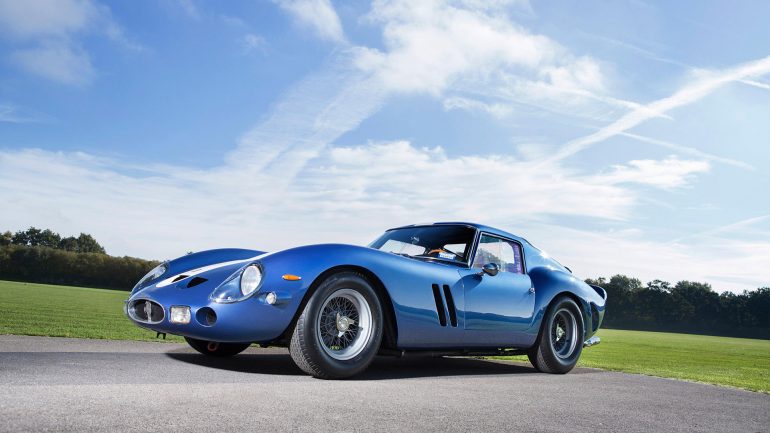
The Japanese Carmakers
1960s Japanese Car Brands
The Japanese automakers like Toyota had a different strategy up their sleeves. These 1960s foreign cars differentiated themselves from Detroit cars, which at the time are big heavy cars loaded with horsepower and options. Toyota’s pricing is geared towards lower to middle class customers, not the customers who are buying cars loaded with expensive options.
However, during that time reputation of Japanese cars as low quality cars was one barrier to entry into the U.S. market. It won’t take long for the 1960s Japanese cars to prove the American buyers wrong by consistently improving their products.
Starting in 1955, Toyota produced its first luxury car, the Crown, powered by a four cylinder, 1.5-liter engine with a three-speed column shift, followed by the 1-liter Corona. However only 700 cars per month were made in 1955, but this rose to 11,750 in 1958, and 50,000 per month in 1964.
These 1960s foreign cars started selling in the United States in 1958, importing the Land Cruiser and Toyopet. While neither sold well, the margins on the Land Cruiser were better, and the Toyopet was withdrawn while Toyota designed a car specifically modified for the ordinary American car buyers – a strategy which later gave us the Avalon and Camry.
The first Americanized Toyota — the Tiara, otherwise known as the Toyota Corona PT20 — came out in 1964. These six-passenger 1960s foreign cars had a 90 gross-horsepower engine which could reach 90 miles per hour, and was comfortable inside. In 1965, the Corona was added at under $2,000; it offered an automatic and factory air as options, very unusual in imported small cars at the time. Sales hit 6,400 in 1965, and reached 71,000 by 1968, nearly doubling each year until by 1971 these 1960s foreign cars were selling over 300,000 vehicles per year, a far cry from 1964’s 2,000.
Toyota itself was very small in the late 1950s by world standards but it would steadily move up to the #3 position and will soon challenge Ford for #2). In 1967, the Corona sold for a reasonable $1,760 – a little below the smallest Big Three sedans — with a good balance of performance, gas mileage, and comfort.
By 1967, these 1960s foreign cars had become well established in the United States – as a niche player. The Corona four-door sedan was seen as competing mainly against the Volkswagen Beetle even though the Corona has larger interior. The Corona was known from its early days for quality as well as a low price though rust was a serious problem until the late 1970s.
Toyota introduced another new car to the US in 1967: the Crown, available as a wagon or a sedan. The Crown was noted for its road manners, smooth ride, and quiet interior.
First introduced in the US in 1967, the Crown was noted for its road manners, smooth ride, and quiet interior.
Soon, Toyota brought to the US the famous but rare 2000GT, which resembled a British sports car with a massive hood and nearly no cabin or trunk. The car had set 16 world speed and endurance records by 1966, with a dual overhead cam six-cylinder engine (150 hp, 121 cid) and five-speed manual transmission. A specially made convertible version was featured in the movie You only live twice.
The 2000 GT had surprisingly slow 0-60 times of over 10 seconds, but cornering apparently made up for it, and the quarter-mile went by in a decent enough 15.9 seconds (about the same as a 1995 Neon). Not quite a muscle car, but it probably handled better than the best Detroit had to offer. Toyota also had a variety of trucks for sale in the late 1960s.
Honda began developing prototypes for road cars in the early 1960s , mostly intended for the Japanese market. The first production vehicle by Honda was the 1963 T360, a tiny pickup truck featuring 4 different body styles (including a traditional truck bed and a panel van) and a 360cc, 30hp engine. This was followed two months later by Honda’s first production automobile, the S500. The S500 was a 2 door roadster featuring a 492cc engine capable of 44 hp with a high 9,500 RPM redline. It was fitted to a 4-speed transmission with the rear wheels being chain driven. Soichiro Honda, founder of Honda took his extensive knowledge of motorcycles and applied it to making these 1960s foreign cars, of which the chain drive and high redline are evidence.
At the time, nearly all of the Japanese automakers were associated with the former zaibatsu, or keiretsu–Japanese business conglomerates. These large companies had close ties with the government who urged them to absorb smaller autobuilders into large brands that could be marketed internationally. Since the government had extensive control over the industry, it was unheard of for a small, independent company to mass produce vehicles, thus making Honda’s success historical in the Japanese economy.
Though participating in international motorsport, Honda was having difficulty selling its automobiles in the United States. Built for Japanese buyers, American buyers were not buying Honda’s small cars. Honda’s first automobile imported to the United States was the N600, sold in Hawaii in 1969. In 1970, the car was imported to California and beyond, but its tiny 600 cc engine and minuscule dimensions made it very unpopular with the American public.
Datsun was a small company that had visions of greatness. In the early 1960s Nissan had partnered with Yamaha and famous car designer Albrecht Graf von Goertz to design a new sports car prototype. No strangers to the sports car game, company executives rightfully saw it as a halo car that would improve its image in the minds of consumers. By 1964 Nissan realized that Yamaha’s DOHC 2.0 Liter engine was not meeting Nissan’s expectations and the project was scrapped. Yamaha then later finished a prototype and took their design to Toyota, and the result was the building of the Toyota 2000GT.
Yutaka Katayama president of Nissan USA at the time, had realized the importance of an affordable sports car. Nissan had already produced the successful series of Fairlady roadsters and these 1960s foreign cars competed against English roadsters, and product planners envisioned a new line of GT cars that would be stylish, innovative, fast, and relatively inexpensive by sharing parts among other vehicles.
Production of the 240Z started on October 1969, with 2 separate versions: one for the Japanese market and one for the US market. The Japanese 240Z featured a SOHC L20 inline-6 producing 130 hp, while the US 240Z had a L24 inline-6 with twin SU carburetors that produced 151 hp. A third Z, the 432Z(PS30) shared a performance version of the S20 engine with the Skyline GT-R. The US 240Z’s engine was not designed with racing in mind as was the Japanese engine, as the Japanese did not think anybody in America would seriously race these 1960s foreign cars there.
In Japan, the car was still known as the Fairlady to keep in line with past Nissan sports cars; Katayama fought furiously to have all American badging replaced with “240Z” and refused all dealers to receive cars until he had done so.
The 240Z was released in America on October 22, 1969, and became one of the best-selling 1960s foreign cars. Combining good looks, powerful performance, and luxury features, it sold over 30,000 units in 1971 and over 50,000 and 40,000 in 1972 and 1973, respectively.
The Datsun Fairlady is a good example of how the Japanese car makers adapted and improved. When when 1960s foreign cars came out, it was under powered compared with the MGB and other 1960s foreign cars but after a number of years the Datsun Fairlady improved beyond recognition into a reasonable machine. The Datsun automobile introduced in the United States by Japan’s Nissan Motors is underpowered, hard to start and stop, but will rank sixth among 1960s foreign cars by 1966, third by 1970.
Nissan used the name Datsun in America until the early 1980s and until now, some people still call these 1960s foreign cars with the old name.
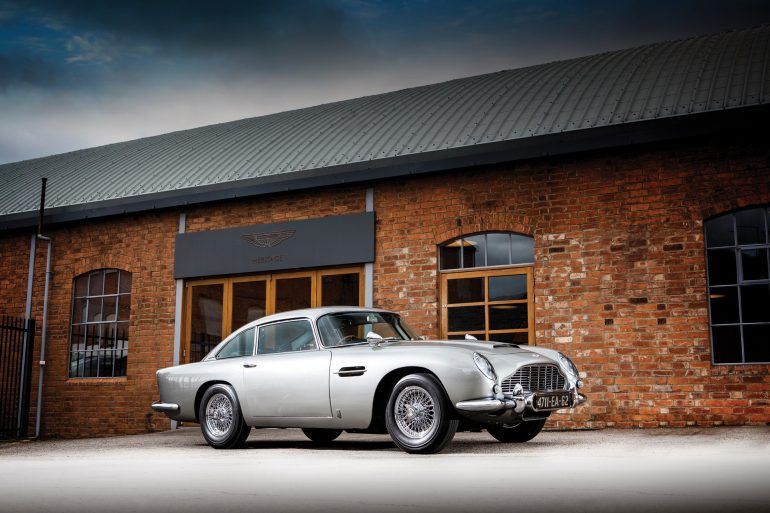
The 1960s Euro Carmakers
1960s Italian, German & French Brands
In the 1960s BMW realized that by focusing on sports sedans and compact touring cars, it could compete better with Mercedes-Benz in the luxury-car markets of Europe and the United States. Hence, at the Frankfurt, Germany, auto show in September 1961, BMW introduced a prototype of a car it called the “New Class” sedan. The New Class was so good, a great 1960s import car, that it would become the blueprint for virtually every car that BMW produced until the 1990’s.
Announced in 1961, the BMW 1500 was the first of the New Class generation. The 1500 was the first modern BMW with a four-cylinder engine. It came out in 1963 with a top speed of 148 km/h. These 1960 foreign cars also featured front disc brakes and 4-wheel independent suspension. The BMW 1500 was only available as a four-door sedan. The car was well-received and BMW couldn’t keep up with the demand. With demand for high performance, the 1500 evolved into the Classic BMW 2002, which was Car magazines and the public were enthusiastic in their praise for the modern engineering in the 1500 and were eager to buy them.
The Isetta was one of the 1960s car imports but which one hardly sees on American roads nowadays, unlike other American classic cars.
BMW manufacturing plants couldn’t keep up with the demand of these 1960s foreign cars, and only 23,807 vehicles were made between 1962 and 1964. The 1500 was a middle-class family sedan, but the German market demanded a car with higher performance. They did not have to wait long, for BMW’s engineers subjected the 1500 to further development, evolving into the classic BMW 2002, when these 1960s foreign cars were first released in early 1968. In-between models were the 1800 which had a 90 hp engine. The 1600 model was released in February 1967 and consumers were buying them. Car and Driver called it “the best small sedan we ever drove” as well as “the best economy car ever offered to an undeserving American public.” It was cheap ($2,500), fast (102 mph and 11.4 seconds to 60 mph), economical (up to 30 mpg on the highway) and reliable.
The BMW Isetta Bubble Car was popular as a second car with a 300CC motorbike engine giving 80MPG and a top speed of 55 MPH.
With Volvo, 1965 saw a new model of the Amazon, the Favorit released, but the difference between this model and the standard two-door version was not particularly striking. In 1966 Volvo 144 was released. This new car model had been keeping Volvo’s design engineers occupied for so long was, in terms of safety, extremely advanced. It had disc brakes all round, had a split steering column and it came with a new lock on the three-point safety belts. The body had energy-absorbing crumple zones at the front and rear. Even the door locks had a safety design. The 144 came a triangle-split dual-circuit brake system. The car had two brake circuits and, if one of them failed, 80% of braking effect was still available making these 1960s foreign cars among the safest to ride on.
Two years later, the Volvo 144 was also a success abroad, including the US where these 1960s foreign cars complied with the new safety regulations.
In 1968, more models based on the 144 were produced, including the Volvo 164, the 140 series, the Volvo 144 Taxi. In Great Britain, Volvo’s sales rose by 70% during the year. The following year, a number of minor improvements to the new 140 Series models were presented. They included head restraints on the front seats, safety belts for three passengers in the rear seat and an electrically-heated rear window. These 1960s foreign cars cars will see more safety improvements during the subsequent decades, cementing its reputation as a builder of strong and safety-conscious cars.
Volkswagen cars were first exhibited and sold in the United States in 1949. From only two units sold in America that first year, Volkswagen Type 1 vehicles'(as they were first called) sales increased dramatically over the years, the total of these 1960s foreign cars reaching one million in 1955.
There were numerous buyers for these 1960s foreign cars and sales were being increased dramatically mainly due to ingenuous advertising campaigns. Volkswagen ads became as popular as the car with the use of crisp layouts and witty copy to lure the younger, sophisticated consumers with whom the car became associated. Officially referred to as the Type 1, the first reference to the name Beetle occurred in U.S. advertising in 1968.
During the 1960s and early 1970s, although the car was becoming outdated, innovative advertising and a growing reputation for reliability helped Volkswagen’s production figures to surpass the levels of the previous record holder, the Ford Model T. By 1973, total production of these 1960s foreign cars was over 16 million.
The first reference to the “Beetle” occurred in the USA. These 1960s car imports were among the most popular and could still be seen on American roads today.
Volkswagen expanded their product line in 1961 to be able to compete with other 1960s foreign cars with the introduction of several Type 3 models, which were nothing but body style variations. The Fastback, Notchback and Squareback models were based on Type 1 mechanical underpinnings. In 1969 the relatively unpopular Type 4 (also known as the 411 and 412) models were introduced. They differed substantially from previous models with the notable introduction of a fully automatic transmission, electronic fuel injection, a unibody construction, and a sturdier powerplant.
In May, 1960 the Peugeot 404 was introduced by Peugeot. Designed in Italy, it marked an important stylistic turning-point for the image and future of the automaker. Stylistically, the body of the Pininfarina-designed 404 could be described as a blend of classic modernism and good taste, signifying a total revamp of the Peugeot image. The following year, Peugeot’s annual output reaches 260,000 vehicles. Also, the direct injection engine was offered as standard on the 404.
Despite previously specialising in traditional saloon cars, in 1965, Peugeot embraces front-wheel drive on the 204. It has a light alloy engine with overhead camshaft, four independent wheels and disc brakes on the front wheels. On 14 June, a special single-seater diesel 404 coupé beats 40 world records on the Montlhéry ring. Two million of these 1960s foreign cars were produced between 1960 and 1972. Described as a blend of classic modernism and good taste, the 404 sold well.
In 1967, the famous Dustin Hoffman film “The Graduate” gave worldwide unforgettable celebrity to the Spider, also known by its Italian nickname Duetto and its unique shape. These 1960s foreign cars were designed by Battista Pininfarina – his last collaboration with Alfa Romeo, and which was the result of several years of design studies dating to the late ’50’s. Alfa Romeo (now owned by Fiat ), is an Italian automobile manufacturer founded in 1910. Alfa Romeo has been a part of the Fiat Group since 1986. Before being bought by , Alfa Romeo always had a bold commercial policy, constantly experimenting with new solutions and using them in its series production, even at the risk of losing market share. These 1960s foreign cars often used controversial and unorthodox styling too, which often challenged assumptions about styling.
In the 1960s Alfa Romeo became famous for its small cars and models specifically designed for the Italian police – “Panthers” and Carabinieri; among them the glorious “Giulia Super” or the 2600 Sprint GT, which acquired the expressive nickname of “Inseguimento”.
These 1960s foreign cars sold well as attested by the February 1961 production of the 100,001st Giulietta.
1966 is an important date for the Alfa spiders which came with its very own unique Italian styling. Alfa Romeo launches a competition to find a name for the 1600 Spider. A certain Mr. Giudobaldo Trionfi of Brescia wins, with his suggestion of the name “Duetto”. The “Duetto” Spider’s success even stretched globally.
The Alfa Romeo Spider is a roadster widely regarded as a design classic. These 1960s foreign cars remained in production for almost three decades with only minor aesthetic and mechanical changes. Coming with a monocoque construction (designed with the relatively new principles of crumple zones incorporated into the front and rear), the engine was a 1570 cc variant of the Alfa Romeo twin cam four cylinder engine, and produced 109 hp. Sparsely fitted inside, it came with independent front suspension, five speed transmission and disc brakes.
The original Duetto was in production from 1966-1967. It was replaced in 1969 by the 1750 Spider Veloce, powered by a 118 hp 1779 cc engine. In Europe this was fitted with two twin carburettors, whereas models for the North American market had SPICA mechanical fuel injection. Modifications were also made to the suspension, brakes, electrics and wheels and tires though the car looked essentially the same. Visible differences were limited to the rear-view mirror repositioned to the door, and different badging on the tail. The car’s official title was 1750 Spider Veloce, the name Duetto being dropped from this point on.
During the 1960s, Alfa Romeo concentrated on competition using production-based cars, including the GTA (standing for Gran Turismo Allegerita), an aluminium-bodied version of the Bertone-designed coupe with a powerful twin-plug engine. These fast 1960s foreign cars won the inaugural Sports Car Club of America’s Trans-Am championship in 1966.
Renault is a French vehicle manufacturer producing cars, vans, buses, tractors, and trucks. Producing cars since late 1898, the Renault corporation was founded in 1899. The company is well known for numerous revolutionary designs, security technologies and motor racing. Its cars were exported to the United States during the 1950s and 1960s.
The rear engine 4CV model, which was launched in 1946, proved itself a capable rival for 1960s foreign cars such as the Morris Minor and Volkswagen Beetle, its success (more than half a million sold) making sure it remained in production until 1961. There was also a large mechanically conventional 2-litre 4-cylinder car, the Renault Fregate, from 1951 to 1960.
The 4CV’s replacement, the Dauphine, sold extremely well as the company expanded production and sales further abroad, including Africa and North America. However, 1960s foreign cars did not sell well in North America and it was outdated by the start of the 1960s.
In an attempt to rebound from those failures, Renault launched two cars which were to become phenomenally successful – the Renault 4 and Renault 8 in 1961 and 1962 respectively. R4 was world’s first car with hermetically sealed cooling-system. The R4 in particular was to continue in production until 1992. R8 was the first-ever mass produced car with disc brakes all round.
R8 made its entry to the US in 1962.These 1960s foreign cars continued Renault’s motor racing traditions with great success in rallying, a tradition which was further upheld by collaborations with the Alpine company (which most famously produced the Renault-powered Alpine A110).
The company achieved success with the more upmarket Renault 16 launched in 1966, which continued Renault’s reputation for innovation by being the world’s first hatchback larger than subcompact size. R16 was also the first Renault-model to gain the title “The car of the year”.
In 1969, over 1 million Renault vehicles were built and more than 500,000 were exported proving once and for all the drawing power of these 1960s foreign cars.
Porsche, is a German sports car manufacturer, founded in 1931 by then Austrian Ferdinand Porsche, the engineer who also created the first Volkswagen.
In racing, Porsche’s main rival has traditionally been Ferrari. In the daily-driver marketplace, Porsche’s traditional rivals are its fellow German automakers Mercedes-Benz, Audi, and BMW , as well as Lotus, Jaguar, and Maserati. Ferrari, on the other hand, competes more directly with firms such as Lamborghini, Bugatti, TVR and Aston Martin.
In 1963, after some success in motor-racing, namely with the Porsche 550 Spyder, the company launched the Porsche 911, another air-cooled, rear-engined sports car, this time with a 6-cylinder “boxer” engine. The 911 has become Porsche’s most well-known model, successful on the race-track, in rallies, and in terms of sales these 1960s foreign cars did well. Far more than any other model, the Porsche brand is defined by the 911.
It remains in production; however, after several generations of revision, current-model 911s share only the basic mechanical concept of a rear-engined, six-cylinder coupe, and basic styling cues with the original car. A cost-reduced model with the same body, but 356-derived running gear (including its four-cylinder engine), was sold as the 912.
The 1960s U.S Car Makers
1960s United States Cars
GM introduced three new smaller cars in the U.S. as 1961 models: the Buick Special, Oldsmobile F-85 and Pontiac Tempest.
Oldsmobile F-85 was a compact sedan, coupe and station wagon powered which had a V8 engine from 1961 to 1963. In 1964 the F-85 was upgraded to an intermediate sized car. The Cutlass was initially the top model of the F-85 line but became a separate model by 1964 with the F-85 nameplate continued only on the lowest priced models through the 1972 model year. Subsequently, all Oldsmobile intermediate 1960s cars were Cutlasses.
The Corvair would represent several production firsts for Chevy including: their first (only) rear air cooled engine, first unitized body, first production car turbo, and fully independent suspension for each wheel-front and rear.
Chevrolet introduced the radical Corvair which featured an aluminum 6 cylinder rear engine layout. The 1960 Chevrolet Corvair 500 Deluxe came with a Basic Corvair Engine , one-barrel carburetor, and three-speed manual transmission Chevy may not have “copied” the VW 1960s cars but many of the basics of the air cooled rear engine, compact transaxle and suspension were similar with the main difference that the Corvair was larger, inside and outside and was an “American size compact”. The Corvair would represent several production firsts for Chevy including: their first (only) rear air cooled engine, first unitized body, first production car turbo, and fully independent suspension for each wheel-front and rear.
Early in the year of 1960 a “sporty” Monza model was offered with bucket seats, full wheel covers and full vinyl interior. This sporty 1960s cars were to really “drive” Corvair sales and attract the interest of enthusiasts in the coming years.
Even during this early period the Corvair was developing a following and was considered one of the “sportier” compacts, sometimes being referred to as a “poor man’s Porsche”.
As part of the 1962 model year, Chevrolet introduced a new line of 1960s, the Chevy II. The initial Corvair had been positioned as an economy car, but it was much more successful with the plusher trim and sportier image of the Monza model which sold well in 1961.
Chrysler had its Valiant. It was conventional in layout, but actually was extraordinary in its new features. The Valiant was sold as separate brand in the first year, but subsequently displayed Plymouth logos. The first generation was launched in 1960 and lasted until 1962. It consisted of a unibody car. It was restyled in 1963 then totally redesigned in a style reminding of European cars of the time. From 1963, Dodge used the Valiant as a base for its Dart models.
Only survivor of the Detroit compacts, the Valiant lived up to 1976 when it was replaced by the Volare and its Dodge clone the Aspen. From its creation the Valiant and its various imitations had found a market, but although profitable, did not suffice to stop Plymouth from its share of 1960s cars.
In fact, the paradox is that the success of the Valiant led Plymouth to make another costly mistake. Assuming the mood for smaller 1960s cars, it downsized its whole fleet. Unfortunately, the majority of customers still wanted larger cars, and Plymouth lost more market shares.
The Mercury Comet was the everything car for Mercury. Introduced in 1960 on a stretched Falcon frame, the Comet had to be Mercury’s compact, intermediate, and pony car entry at the same time. The planned 1961 Edsel Comet compact car was relabeled the Mercury Comet and sold more cars in its first year than all models of Edsel ever produced.
The Comet was developed as a compact car for the Edsel line. But with the Edsel brand eliminated before the 1960 model year, Ford released the Comet as a separate model, that was sold by Lincoln-Mercury dealers. The Mercury Comet was the everything car for Mercury.
Fewer than 6,000 Edsels survive and today they are considered collectors’ items, with convertibles sometimes selling for over US$20,000 if in good condition.
The Rambler was an interesting but sad story. Cheap and easy to repair, the new Rambler was a hit in the recession-racked year of 1958, when American Motors was the only domestic car manufacturer to show a profit. In 1960, Rambler produced over 450,000 cars, and became number three in sales among domestic brands.
Ramblers were the first cars to use Unibody construction throughout their model lineup. The primary advantage of this technology was a stronger structure without the need for a separate chassis. With less squeaks and rattles, the overwhelming majority of contemporary automobiles, with the exception of trucks and some SUV’s, owe their design to some form of this 1960s cars’ original unitized body construction innovation.
In another safety milestone, Rambler was the first to offer seat belts as an option in 1950, and the first to provide them as standard equipment by the end of the decade.
By 1962, the introduction of compact cars by the big three automakers had decreased Rambler’s market share.
Rambler introduced some of the most attractive designs of any manufacturer during the mid 1960’s. AMC Rambler Limited Edition Extra puts added emphasis on this period with tests of the again redesigned Classic and Ambassador series for 1966, and the introduction of the Classic-based Marlin for 1965.
The unsophisticated Marlin was an attempt to capture a piece of the “personal car” market dominated by the Ford Thunderbird, and Buick Riviera. Unfortunately, Rambler’s attempt to compete with the “Big Three” met with limited success. Their 1960s cars were not selling well. The Rambler name was falling out of favor in a market dominated by flashiness and horsepower. A new image was in the works, and by 1968 the Rambler name, for years a symbol of economy, was shown the door – ending a saga of 1960s cars known for gas saving.
1960s Car Models - In Depth Guides
Here is a list of the important models from the 1960s decade


